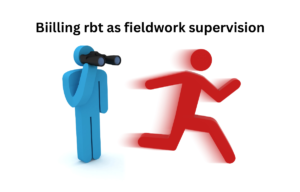The Data Storytelling Arc is a powerful framework that helps transform complex data into a clear, compelling narrative. By following a structured storytelling approach, the arc provides a beginning, middle, and end to data presentations, guiding audiences from the initial context to insightful conclusions and actionable recommendations. This approach not only makes data more engaging but also ensures that the audience can easily grasp key findings and their implications. The Data Storytelling Arc is essential for anyone looking to bridge the gap between raw data and meaningful action, turning numbers into a story that informs and inspires.
What is the Data Storytelling Arc?
The Data Storytelling Arc is a structured framework for presenting data insights in a narrative format. It follows a progression similar to traditional storytelling, with a beginning, middle, and end, guiding the audience through key findings in a logical and engaging way. By contextualizing data insights, it makes them more relatable and actionable. This approach helps turn raw numbers into a story that resonates with the audience.
Why is the Data Storytelling Arc important for data professionals?
The Data Storytelling Arc is important because it helps data professionals communicate complex insights in a way that’s easy to understand and impactful. By organising data findings into a story, they can better capture the audience’s attention and drive actionable outcomes. This approach bridges the gap between technical data analysis and strategic decision-making, making insights more accessible to non-technical stakeholders.
What are the main stages of the Data Storytelling Arc?
The main stages of the Data Storytelling Arc are context, data introduction, analysis, insights, recommendations, and conclusion. Each stage builds on the previous one, gradually guiding the audience through the narrative. Context sets up the problem, while analysis and insights provide depth. Recommendations lead to actionable steps, and the conclusion reinforces key takeaways, giving the story a full arc.
How does setting context help in the Data Storytelling Arc?
Setting context at the beginning of the Data Storytelling Arc helps the audience understand the relevance of the data. It frames the problem or question that the data addresses, making it clear why the analysis matters. Providing context allows the audience to connect emotionally with the data, which improves engagement and sets a strong foundation for the story.
What role does analysis play in the Storytelling Arc?
In the Data Storytelling Arc, analysis represents the “rising action” where data is explored in detail. This stage examines patterns, correlations, and trends, adding depth to the story. Analysis helps uncover insights that go beyond surface-level observations, giving the audience a deeper understanding of the data. This part of the arc is crucial for building up to meaningful conclusions.
How are insights different from analysis in the Storytelling Arc?
Insights in the Data Storytelling go a step beyond analysis by interpreting what the data actually means. While analysis identifies patterns and trends, insights explain the “why” behind them. Insights provide actionable understanding, helping the audience make connections between data findings and real-world outcomes. This step is essential for translating data into meaningful, context-rich conclusions.
What is the purpose of recommendations in the Data Storytelling Arc?
Recommendations in the Data Storytelling provide actionable steps based on the insights gathered. This stage answers the question, “What should we do next?” By giving clear, data-backed suggestions, recommendations help the audience make informed decisions. They also serve as a call to action, encouraging stakeholders to implement strategies aligned with the data’s story.
How does the conclusion reinforce the Data Storytelling?
The conclusion in the Data Storytelling reinforces the main findings and reminds the audience of the key insights and recommendations. It ties everything together, summarizing the narrative and leaving a lasting impression. The conclusion also emphasizes the significance of the data story, making it easier for the audience to recall essential points and feel confident about the proposed actions.
How can the Storytelling Arc improve decision-making?
By organizing data in a clear narrative, the Data Storytelling enhances understanding and drives informed decision-making. It makes insights more relatable and actionable, ensuring that stakeholders know how to respond to the findings. This approach aligns data analysis with organizational goals, enabling decisions that are grounded in evidence and strategic foresight.
Who benefits from using the Data Storytelling?
The Data Storytelling benefits data professionals, business leaders, and anyone who needs to present or interpret data. It enables data analysts to communicate findings effectively, while stakeholders gain a clear understanding of complex insights. The approach is especially helpful for non-technical audiences, as it simplifies data narratives and promotes actionable, data-driven strategies.
The Data Storytelling Arc transforms data insights into an engaging narrative, making complex findings accessible and actionable. By following a structured path from context to recommendations, this approach enhances understanding and empowers stakeholders to make informed decisions. Through its organized storytelling format, the Data Storytelling turns data into a powerful tool for driving strategic action and bridging the gap between analysis and real-world application.
Read more at our website.









